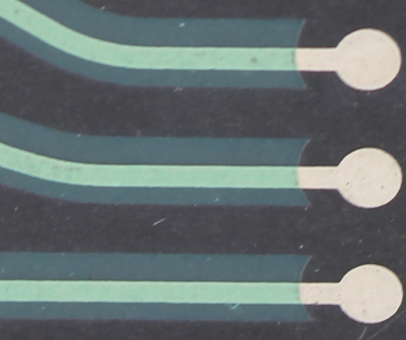Utilizing Vias in Membrane Switch Circuitry
When designing a membrane switch on a flexible printed circuit, the circuit can often require either vias or a double-sided circuit design.
What are vias?
Vias are small holes, typically measuring approximately .008”, that form a pathway between two sides of the circuit material. Vias allow electrical connections to flow between both sides of the circuit substrate. The circuitry ink is essentially forced through these small holes which create the via connection. If you look at a two-sided circuit membrane, the holes will be located at the end of the routes (as shown in the picture to the right).
Why are vias used?
Vias are typically used due to the size and space constraints, where the membrane switch circuitry has a small footprint that is unable to accommodate the circuitry routing and traces. By utilizing vias, we are able to use both sides of the circuit substrate which essentially doubles the real estate without having to increase the size of the part.


